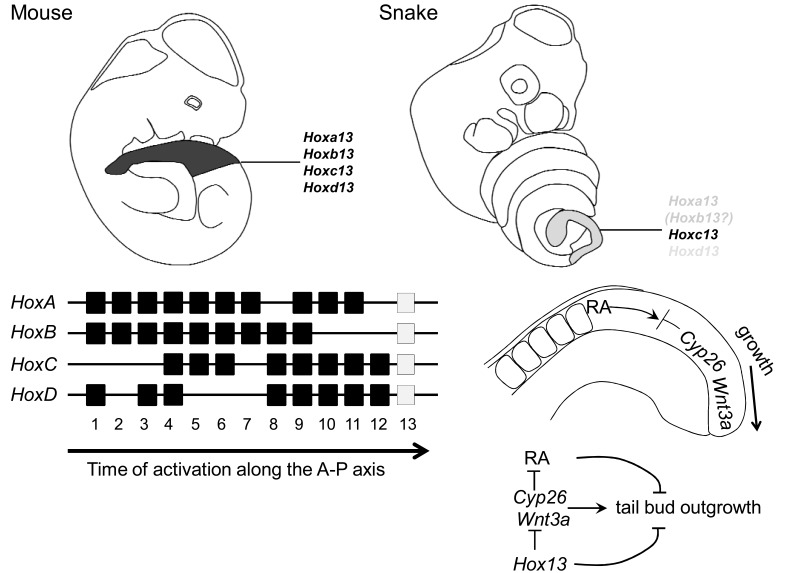Fig. (3). Hox13 genes terminate axial extension and are expressed at a lower dose in the snake’s tail bud.
The Hox13 paralogous genes are the final Hox genes to become activated in the tail bud in the temporal collinear sequence of Hox gene activation that occurs during development (mouse Hox clusters shown). In the outgrowing tail bud Wnt3a provides a growth stimulating signal while Cyp26 counteracts a growth suppressing Retinoic acid (RA) signal emanating from the somites. Hox13 genes have been suggested to terminate tail bud outgrowth by suppressing Wnt3a and Cyp26 activity [6]. In the mouse four paralogous Hox13 genes are expressed strongly in the tail bud (approximate cumulative expression domain indicated). In the snake only Hoxc13 has comparable expression whereas Hoxa13 and Hoxd13 are only weakly and transiently expressed thereby providing a mechanism for prolonged tailbud outgrowth in the snake [5]. Hoxb13 has not been characterized in the snake but since this gene exists as a pseudogene in the lizard (Anolis carolinensis) (JMW unpublished observations) it is possible that a functional Hoxb13 ortholog also has disappeared from the snake genome.

